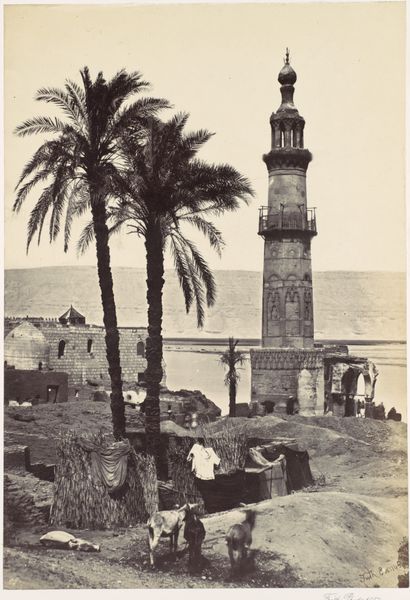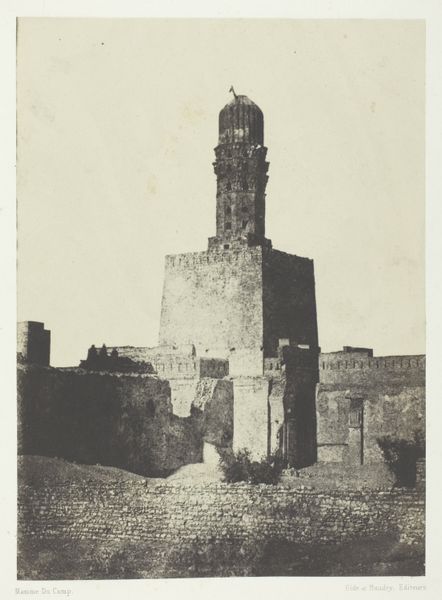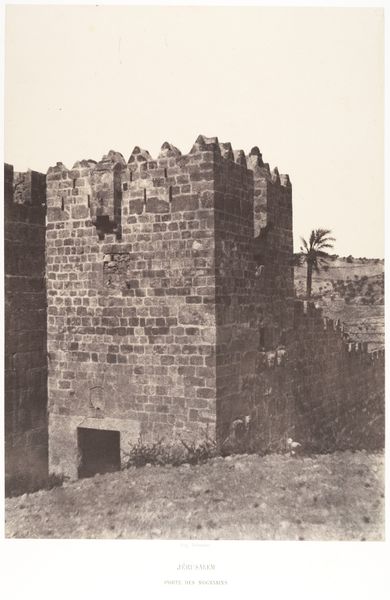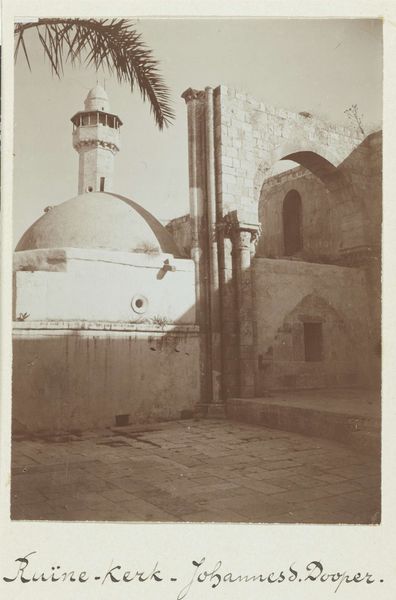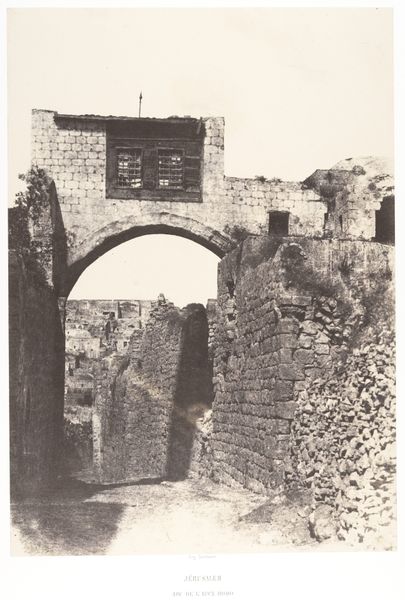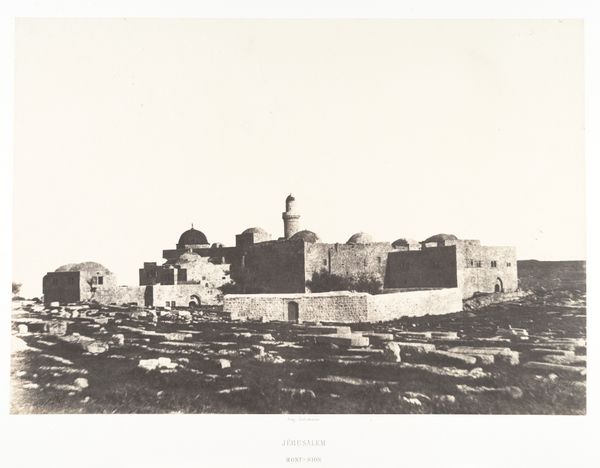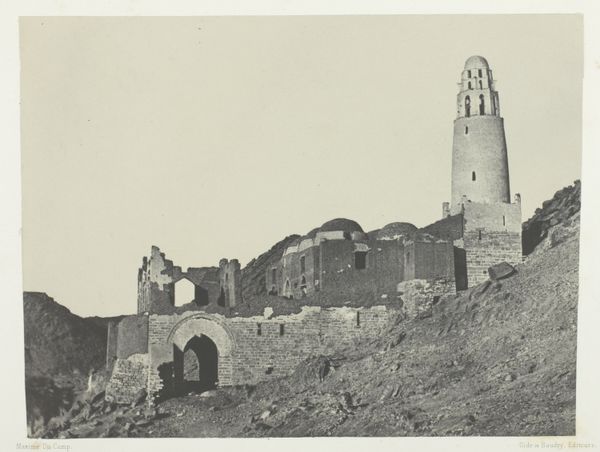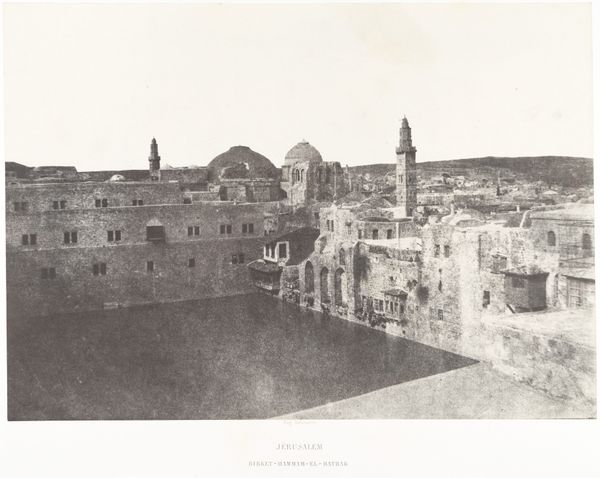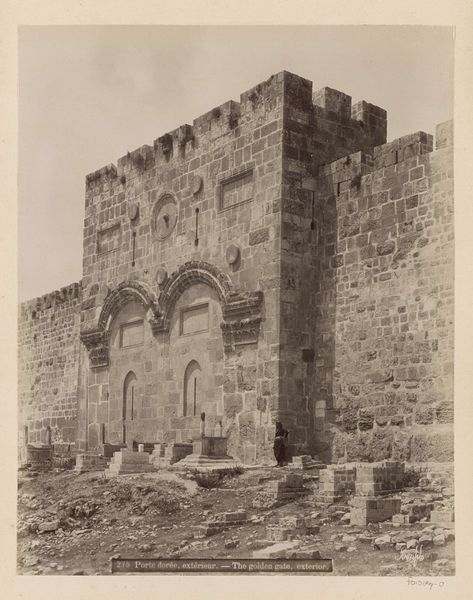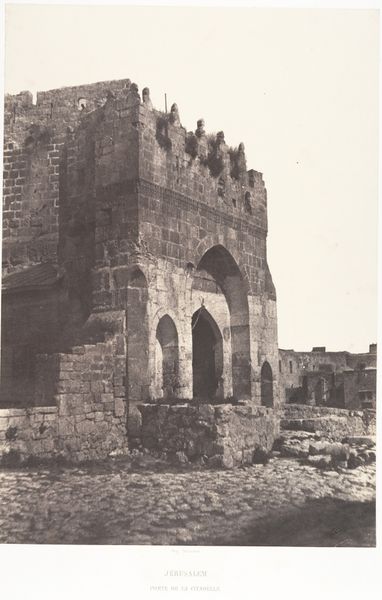
Jérusalem, Minaret de la Rue du Patriarche 1854 - 1859
0:00
0:00
daguerreotype, photography, architecture
#
landscape
#
daguerreotype
#
outdoor photography
#
photography
#
arch
#
cityscape
#
islamic-art
#
architecture
Dimensions: Image: 33 x 23.6 cm (13 x 9 5/16 in.) Mount: 60.3 x 44.6 cm (23 3/4 x 17 9/16 in.)
Copyright: Public Domain
Curator: This image, titled "Jérusalem, Minaret de la Rue du Patriarche," was created between 1854 and 1859 by Auguste Salzmann. It's a daguerreotype. Editor: The overwhelming feeling I get is one of profound stillness and solidity. The photograph itself is faded, lending an air of antiquity, and that minaret stands almost defiant against the sky. Curator: Indeed, the choice of the daguerreotype process, an early photographic technique, imbues the scene with a remarkable sense of historical weight. Salzmann wasn't just capturing an image; he was recording a moment in time with a medium that was itself revolutionary. His project was commissioned to provide documentary evidence supporting Biblical archaeology. Editor: Knowing that Salzmann used this relatively new technology to "prove" the past adds another layer to the feeling of distance. It’s no longer a matter of personal viewpoint, but something more mediated and overtly agenda-driven. That very straight-on view of the minaret also communicates an interesting cultural power dynamic. Curator: Absolutely. The minaret is, of course, an important architectural and religious symbol within the cityscape, representing the call to prayer, and acts as a grounding axis, even if it also reaches toward the heavens. Salzmann presents a controlled and almost scientific framing of a culturally potent form. The use of the architectural arch motif could also serve as visual symbolism to the stability of that form as well. Editor: It’s interesting to note how much the texture of the stone dominates the visual field. The interplay of light and shadow creates this palpable sense of depth— almost making the urban environment a character itself. Curator: The photographic lens picks up subtleties that the human eye may often miss. By revealing Jerusalem with an emphasis on solidity and geometric precision, it invites reflection on continuity through shifting empires and cultures. It underscores the lasting relevance of ancient history amid ongoing geopolitical change. Editor: The muted palette forces a contemplation about timelessness itself. I am walking away with a sense that time has collapsed into one evocative plane within this image. Curator: And by allowing the visual symbols to guide our understanding, the narrative reveals itself quietly and with layered precision.
Comments
No comments
Be the first to comment and join the conversation on the ultimate creative platform.




